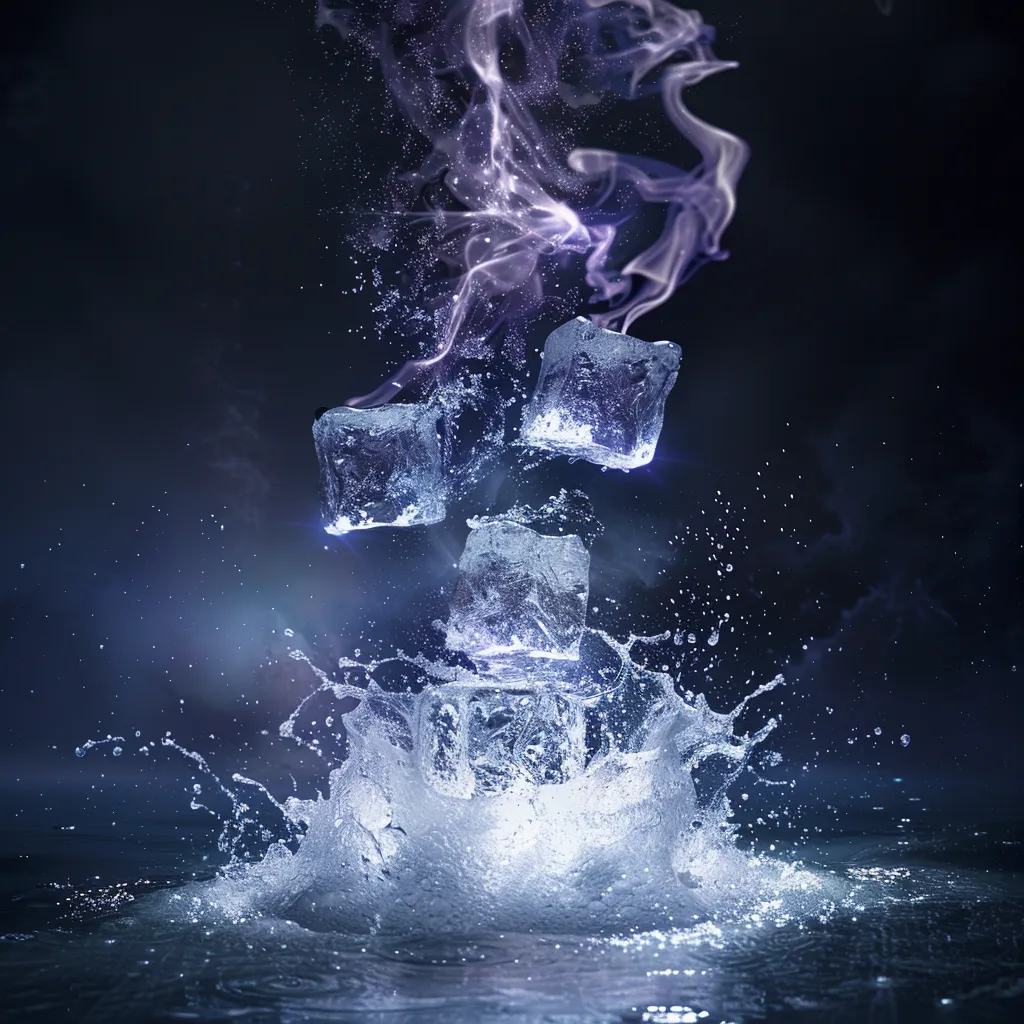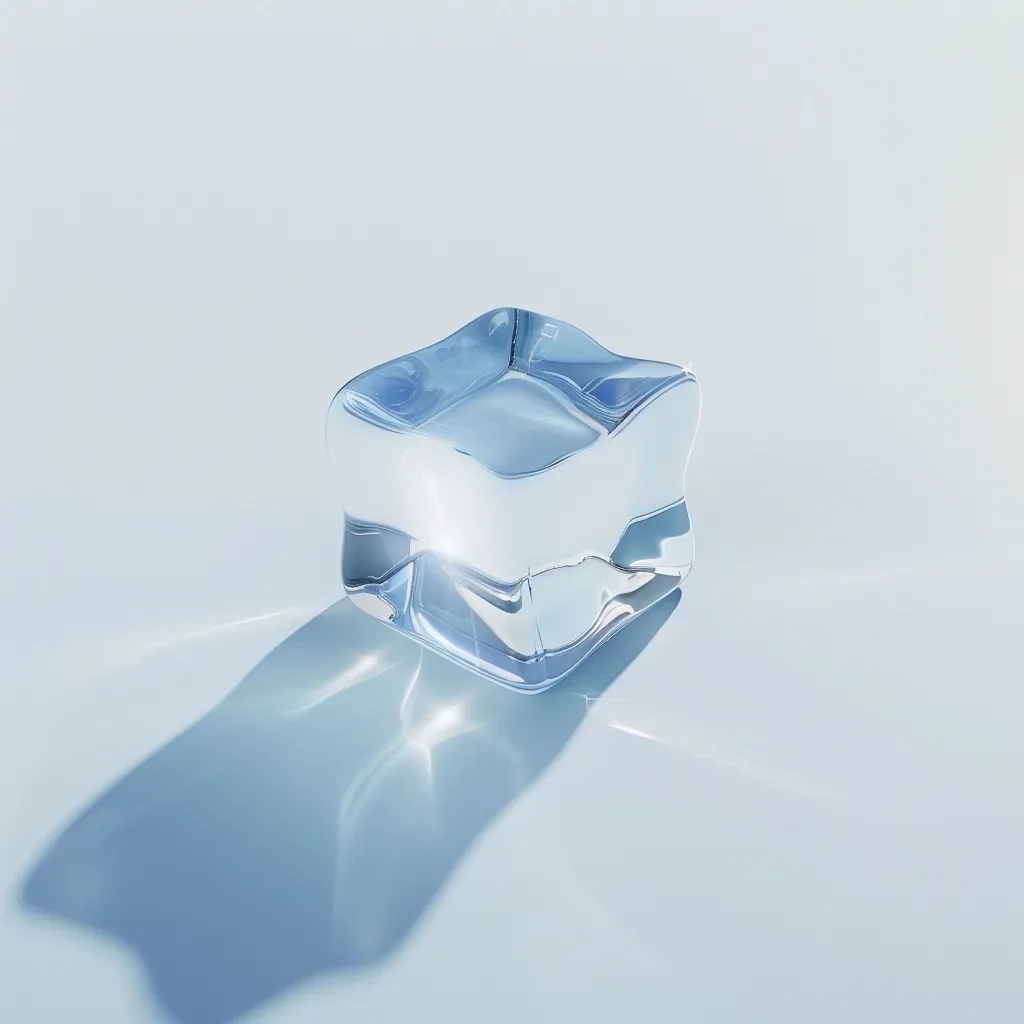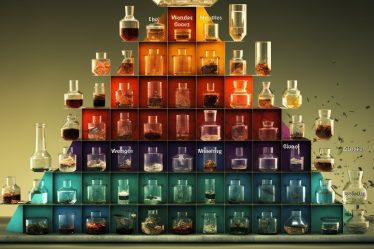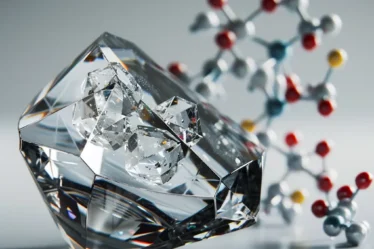
Matter exists in different forms based on particle arrangement and energy levels. The four classical states of matter—solid, liquid, gas, and plasma—are part of our daily experiences.
Solids retain shape and volume, liquids flow but maintain volume, gases spread to fill space, and plasma is charged and highly energetic. Each state has distinct properties that explain various physical phenomena, from ice melting to gases expanding in the atmosphere.
States of Matter: Quick Summary
Do you just need the basics? Here’s a simple explanation of what states of matter are:
🟠 Solids have a fixed shape and volume because their particles are tightly packed and vibrate in place.
🟠 Liquids flow to take the shape of their container while keeping a constant volume, with particles moving past each other.
🟠 Gases expand to fill any container, with particles moving rapidly and far apart, allowing easy compression.
🟠 Plasma is a state of matter where gas particles become ionized, allowing them to conduct electricity and respond to magnetic fields.
If you find states of matter challenging, don’t worry! Personalized tutoring or interactive chemistry lessons make these concepts more straightforward. Explore more chemistry topics and broaden your knowledge with our free World of Chemistry blogs.
Solids: Structure and Properties
The solid-state of matter is defined by its rigid structure, where particles are arranged in a fixed, tightly packed pattern. This arrangement gives solids a definite shape and volume, making them stable and resistant to external forces.
The Structure of Solids
In solids, particles—atoms, ions, or molecules—are closely packed in an organized, often crystalline pattern. This regular arrangement creates a strong bond between particles, preventing them from moving freely. Instead, they can only vibrate in place. This limited movement allows solids to maintain a stable structure, even under pressure.
For instance, a metal bar retains its shape when force is applied, unlike liquids or gases, which flow or spread. Additionally, the compact structure of solids means they are difficult to compress, as there is little space between particles to be reduced further.
Properties of Solids: Shape and Volume
Solids are characterized by their fixed shape and volume. The strong forces that hold particles together prevent them from moving apart, so solids don’t flow or change shape to fit their container, as liquids do.
For example, ice retains its solid form even when placed in containers of different shapes. Unlike gases, which expand to fill available space, solids maintain their volume regardless of external conditions. This rigidity makes solids ideal for applications where stability and strength are crucial, such as in building materials or tools.
Phase Transition of Solids: Melting and Sublimation
When heated, the particles in a solid absorb energy and begin to vibrate more vigorously. This energy weakens the forces holding the particles in place at the melting point, allowing the solid to transition into a liquid, such as ice melting into water.
Another phase transition, sublimation, occurs when a solid turns directly into a gas without becoming a liquid. Dry ice (solid carbon dioxide) sublimates at room temperature, changing directly into gas.
Liquids: Fluidity and Shape
Liquids are unique due to their ability to flow and take the shape of their container while retaining a fixed volume. This sets them apart from solids with a definite shape and gases, which expand to fill any available space.
Properties of Liquids: Shape and Volume
Liquids maintain a definite volume but lack a fixed shape. This means that while the amount of liquid remains the same, it adjusts to fit the shape of the container it occupies.
For example, when water is poured into a cup, it takes the shape of the cup, but the total volume remains unchanged if transferred to a wider container. Unlike gases, which can expand or compress to fit different container sizes, the volume of a liquid remains constant under normal conditions, even though its shape may change.
Intermolecular Forces in Liquids
The behavior of liquids is influenced by intermolecular forces, which are weaker than those in solids but stronger than in gases. In liquids, particles are close together but not in fixed positions, allowing them to move more freely than in solids. These forces prevent particles from drifting apart, maintaining the liquid’s volume.
However, the weaker attraction allows particles to slide past each other, enabling the liquid to flow while retaining a consistent volume. This balance between particle movement and intermolecular attraction gives liquids their characteristic fluidity.
Vaporization and Freezing in Liquids
Liquids can change into gases or solids through vaporization and freezing.
Vaporization occurs when a liquid absorbs enough heat for particles to escape the intermolecular forces, turning into a gas. This can happen through evaporation or boiling.
Conversely, freezing occurs when a liquid loses heat, causing particles to slow down and lock into fixed positions, turning into a solid, as seen when water freezes into ice.
Gases: Expansion and Compression
Gases are unique because their particles are spread far apart and constantly in motion. This spacing allows gases to expand and compress easily as particles collide with each other and their surroundings.
Properties of Gases: Shape and Volume
Gas particles move freely, allowing them to expand and fill any container they occupy. For example, air spreads evenly throughout a room, and when inflating a balloon, the gas particles fill the entire space inside.
Gases can also be compressed; when confined to a smaller volume, particles collide more frequently, increasing pressure. This ability to compress is unique to gases, unlike solids or liquids.
Gas to Liquid: The Process of Condensation
Condensation occurs when the gas cools and turns into a liquid as particles lose energy and move closer together. An example is water vapor forming dew on grass during cool nights. Condensation plays a role in daily life, from refrigeration to the water cycle.
Gas Laws: Behavior of Gases Under Pressure
Gas behavior can be explained by Boyle’s Law and Charles’s Law. Boyle’s Law states that gas pressure increases as volume decreases, like when you compress air in a bicycle pump. Charles’s Law shows that gas volume increases with temperature when pressure is constant, such as in a hot air balloon.
The Plasma State of Matter: Ionization and Conductivity
Plasma, the fourth state of matter, forms when gases are exposed to extreme temperatures or electrical energy, causing ionization.
This process creates a mixture of charged particles—free electrons and positively charged ions—which gives plasma its unique properties, such as electrical conductivity and responsiveness to electromagnetic fields.
Plasma is naturally found in stars and lightning, where conditions are extreme, but it can also be created artificially, as seen in neon signs and plasma TVs. Plasma’s ability to conduct electricity and respond to electromagnetic fields makes it valuable in plasma cutters and fluorescent lighting.
Properties of the States of Matter
| State of Matter | Shape | Volume | Particle Movement |
| Solid | Definite (rigid) | Definite (fixed) | Particles are tightly packed, vibrate in place, and have little freedom to move. |
| Liquid | Takes the shape of its container | Definite (fixed) | Particles are close together but can move past each other, allowing fluidity. |
| Gas | Takes the shape of its container | Indefinite (fills available space) | Particles are far apart, move rapidly, and can be compressed or expanded. |
| Plasma | Takes the shape of its container | Indefinite (fills available space) | Particles are ionized (charged), move freely, and are affected by electromagnetic fields. |
Exotic States of Matter: Bose-Einstein Condensates and Beyond
Exotic states of matter, like Bose-Einstein condensates (BECs) and fermionic condensates, form under extreme conditions and behave differently from classical states. These states appear near absolute zero, where quantum effects dominate particle behavior.
Bose-Einstein Condensates: Near Absolute Zero
A Bose-Einstein condensate forms when bosons are cooled to temperatures just above absolute zero, causing them to lose almost all their kinetic energy. As a result, the particles collapse into the same quantum state, acting as a single “super particle” with uniform behavior. This exotic state of matter, predicted by Albert Einstein and Satyendra Bose, was experimentally confirmed in 1995.
Fermionic Condensates: A Quantum Twin
Fermionic condensates form similarly but with fermions, which follow different quantum rules. Fermions can’t occupy the same quantum state individually, but when they pair at ultra-low temperatures, they behave like bosons and create a condensate. This state exhibits superfluidity, where matter flows without friction, offering insights into quantum mechanics and phenomena like superconductivity.
Phase Transitions Between States of Matter
Phase transitions describe how matter changes from one state to another, such as solid to liquid or liquid to gas. These transitions occur when energy (usually heat) is added or removed, changing how the particles within a substance behave. Here, we will cover key phase transitions, including melting, freezing, boiling, sublimation, deposition, and the critical point.
Table of Phase Transitions
| Phase Transition | From | To | Example |
| Melting | Solid | Liquid | Ice melting into water |
| Freezing | Liquid | Solid | Water freezing into ice |
| Boiling | Liquid | Gas | Water boiling into steam |
| Sublimation | Solid | Gas | Dry ice sublimating into CO₂ gas |
| Deposition | Gas | Solid | Frost forming from water vapor |
Melting, Freezing, and Boiling
Melting occurs when a solid absorbs heat, causing its particles to vibrate and gain energy. At the melting point, particles break free from their fixed positions, turning the solid into a liquid, such as ice melting into water at 0°C.
Freezing is the reverse process. As a liquid cools, particles lose energy and arrange themselves into a fixed structure, turning the liquid into a solid, like water freezing into ice below 0°C.
Boiling is when a liquid changes into a gas at the boiling point. For water, this happens at 100°C when particles gain enough energy to break free into the gas phase.
Sublimation and Deposition
Sublimation occurs when a solid changes directly into a gas without becoming a liquid, such as dry ice, turning into carbon dioxide gas at room temperature.
Deposition is the opposite, where a gas turns directly into a solid, like frost forming on cold surfaces from water vapor.
Critical Point and Supercritical Fluids
The critical point is the temperature and pressure at which the distinction between liquid and gas disappears, creating a supercritical fluid. Supercritical fluids, like supercritical carbon dioxide, are used in processes like decaffeination and extraction, making them valuable in various industries.
Advance Your Knowledge in States of Matter
Are states of matter tricky for you? A qualified chemistry instructor can explain complex topics in a way that makes sense to you, making organic and inorganic chemistry understandable and enjoyable.
Search for a tutor using phrases like “chemistry tutor Liverpool” or “chemistry teacher Edinburgh” on platforms like meet’n’learn. You’ll find someone who can tailor lessons to your needs.
If you prefer learning in a group, search for “chemistry classes Leeds” or “chemistry lessons London” online. The search will lead you to chemistry tutoring nearby.
Solid, Liquid, Gas, and Plasma: Frequently Asked Questions
1. What are the four states of matter?
The four states of matter are solid, liquid, gas, and plasma.
2. How do particles behave in a solid state of matter?
In a solid state of matter, particles are tightly packed and only vibrate in place.
3. What happens during the phase transition of melting?
During melting, a solid absorbs heat, causing its particles to move freely and form a liquid.
4. Can all substances undergo sublimation?
Not all substances undergo sublimation; dry ice is a common example of a substance that does.
5. What is the plasma state of matter?
The plasma state of matter consists of ionized particles and can conduct electricity.
6. How does gas differ from the other states of matter?
Gas differs from the other states of matter because it has no fixed shape or volume and expands to fill its container.
7. What is a Bose-Einstein condensate?
A Bose-Einstein condensate is an exotic state of matter formed at temperatures near absolute zero.
8. What is the critical point in phase transitions?
The critical point is the temperature and pressure at which the liquid and gas states of matter become indistinguishable.
References:
1. ThoughtCO
2. Live Science
3. Wikipedia



